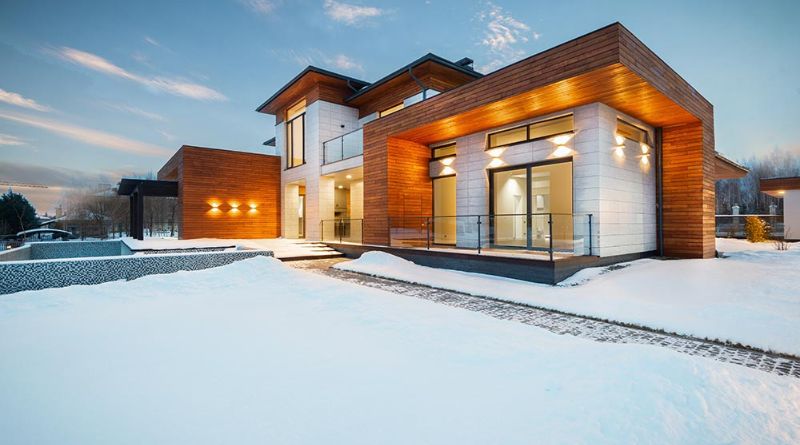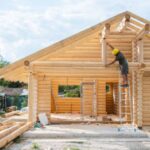Key Takeaways
- Incorporate passive solar design to maximize natural heating and cooling.
- Utilize sustainable building materials like bamboo and reclaimed wood.
- Integrate smart home technologies for efficient energy management.
- Implement green roofs and living walls to improve insulation and air quality.
- Consider water conservation features such as rainwater harvesting systems.
Table of Contents
- Introduction
- Passive Solar Design
- Sustainable Building Materials
- Smart Home Technologies
- Green Roofs and Living Walls
- Water Conservation Features
- Energy-Efficient Landscaping
- Renewable Energy Systems
- Adaptive Reuse and Modular Design
Introduction
Designing an energy-efficient home is much more than lowering your monthly utility bills. It’s a holistic approach that transforms your living space into an environment that prioritizes personal health, reduces ecological impact, and ensures long-term durability and resilience. Whether you’re breaking ground on a new build or looking to modernize and renovate your existing home, today’s options make blending contemporary style with eco-conscious living easy. With thoughtful planning and expert guidance from industry leaders like Brock Built, you can balance comfort, innovation, and responsibility while elevating your overall quality of life.
From the fundamentals of passive solar design to integrating next-generation technologies, homeowners can now access myriad creative strategies for enhancing their spaces. These improvements reduce household energy consumption, foster a healthier indoor environment, and boost property value. The journey toward energy efficiency is filled with both minor upgrades and transformative projects that together form a sustainable, beautiful, and functional home. Below, we look at forward-thinking ideas and practical features that can benefit every household.
Passive Solar Design
Passive solar design forms the backbone of a truly energy-efficient home by leveraging nature’s resources to achieve precise indoor comfort. At its core, this approach positions windows, floors, and walls to collect, store, and distribute solar energy in the form of heat during winter, while minimizing unwanted heat gain in warmer months. Ample, south-facing windows harness sunlight for natural heating, and thermal mass materials—like concrete or stone floors—absorb, store, and release this warmth, keeping interiors cozy. Overhangs, shades, and thoughtfully placed trees are natural barriers to excessive summer sun, providing cooling shade without sacrificing light. These designs are visually pleasing and optimize year-round energy performance, making mechanical heating and cooling systems far less necessary. To see how passive solar principles work in practice, check out this guide at Energy Saver.
Sustainable Building Materials
The choice of materials in your home’s construction or renovation plays a critical role in its sustainability and energy efficiency. Rather than relying solely on traditional resources, consider options like bamboo, which grows rapidly, stores large amounts of carbon, and delivers outstanding strength and flexibility for flooring and cabinetry. Reclaimed wood salvaged from older structures offers a unique, rustic appearance, keeps valuable material out of landfills, and reduces demand for freshly harvested timber. Recycled steel is another excellent option for framing and structural needs, as it’s durable and less energy-intensive to produce compared to new steel. Paints and finishes with low volatile organic compounds (VOCs) can drastically improve indoor air quality, supporting a healthier home environment for all residents. By integrating these sustainable choices, homeowners create environmentally friendly and architecturally distinct spaces.
Smart Home Technologies
Smart home technologies have revolutionized how we think about home management and energy efficiency. Automated lighting systems use motion sensors and scheduling to adjust illumination levels, ensuring lights are on only when needed. Smart thermostats do more than regulate temperature—they learn your household’s patterns, adapt to your preferences, and economize heating and cooling when rooms are unoccupied. With real-time monitoring through easily accessible apps, you can see precisely when and how your energy is being used, enabling you to make informed decisions and further cut waste. Many systems integrate seamlessly with voice assistants and can even automate appliances, leading to more streamlined, efficient, and comfortable living. By adopting these intelligent solutions, you’ll find that energy-conscious living doesn’t mean sacrificing style or ease—it enhances both.
Green Roofs and Living Walls
Green roofs and living walls are innovative bio-architectural features that blend natural beauty with tangible energy-saving benefits. A green roof is essentially a rooftop garden layer that insulates your home, reducing heating requirements in winter and cooling demand in summer by stabilizing indoor temperatures. They also absorb and store rainwater, lessening stormwater runoff and helping counteract urban heat island effects. Inside the home, living walls (vertical gardens) act as dynamic air filters, absorbing pollutants and regulating humidity. These installations provide an ever-changing aesthetic experience—displaying color, texture, and life in every season—while contributing to the home’s overall comfort and well-being. Integrating these green features is a way to demonstrate environmental stewardship without sacrificing style or sophistication.
Water Conservation Features
Designing a truly efficient home means considering water use as much as energy consumption. Installing rainwater harvesting systems allows you to collect and store runoff from roofs for use in landscape irrigation, toilet flushing, or laundry. This reduces your demand on local water supplies and can lower utility bills. Indoors, water-saving fixtures like low-flow faucets, showerheads, and toilets deliver excellent performance while using significantly less water. Greywater recycling systems capture water from sinks, showers, and baths for reuse in irrigation, supporting sustainable gardening efforts. These thoughtful upgrades position your home at the forefront of environmental responsibility. To explore more about water conservation products, visit ENERGY STAR Dishwashers.
Energy-Efficient Landscaping
Landscaping goes far beyond appearance—it can also be vital to your home’s overall energy strategy. Deciduous trees placed on the southern and western sides provide abundant shade during hot summers, blocking intense sunlight, yet losing their leaves in winter to allow warmth. Evergreen shrubs on the north and east sides act as practical windbreakers, sheltering your home from bitter winds and reducing heating needs. Native and drought-resistant plants thrive in local climates with minimal supplemental water. At the same time, permeable paving options help manage stormwater by letting rain soak into the soil, replenishing groundwater, and minimizing runoff. Thoughtfully laid out landscaping can reduce outdoor water and maintenance needs, lower energy bills, and create inviting outdoor spaces perfectly attuned to the cycle of the seasons.
Renewable Energy Systems
Investing in renewable energy technologies is rapidly becoming a pragmatic and appealing choice for homeowners determined to create a truly energy-independent house. Photovoltaic solar panels can be installed on rooftops or even integrated into shingles, producing clean electricity for everything from daily appliances to electric vehicle charging stations. Geothermal heating and cooling systems use the earth’s stable underground temperatures to maintain year-round indoor comfort at a fraction of the energy used by traditional methods. Small wind turbines can serve as an additional energy source in areas with sufficient breezes, further decreasing reliance on grid power. These renewable systems significantly cut electricity costs and ensure the home’s energy comes from sustainable, environmentally sound resources. Smaller-scale battery storage solutions can add even more resilience and flexibility, giving you peace of mind during outages.
Adaptive Reuse and Modular Design
Another essential strategy in sustainable home design is making the most of existing resources through adaptive reuse and modular construction. Adaptive reuse reimagines old warehouses, barns, or other structures, preserving their unique character and reducing the environmental footprint associated with demolition and new construction. Modular and prefabricated homes, meanwhile, are built in sections at a factory, keeping waste to a minimum and ensuring greater precision and speed during assembly. These approaches offer versatile, customizable floor plans and can be expanded or reconfigured as your needs evolve. They’re also ideal for meeting the high standards of green construction, as energy efficiency is built into each process stage, perfect for homeowners seeking innovative, flexible, and responsible solutions.
By leveraging modern innovation, sustainable technologies, and a strong sense of environmental responsibility, homeowners can craft spaces that benefit their family and the planet. The wide variety of strategies and resources available—including expert guidance empower you to make lasting choices with positive impacts, resulting in a home that’s healthier, more efficient, and ready to meet the demands of the future.






